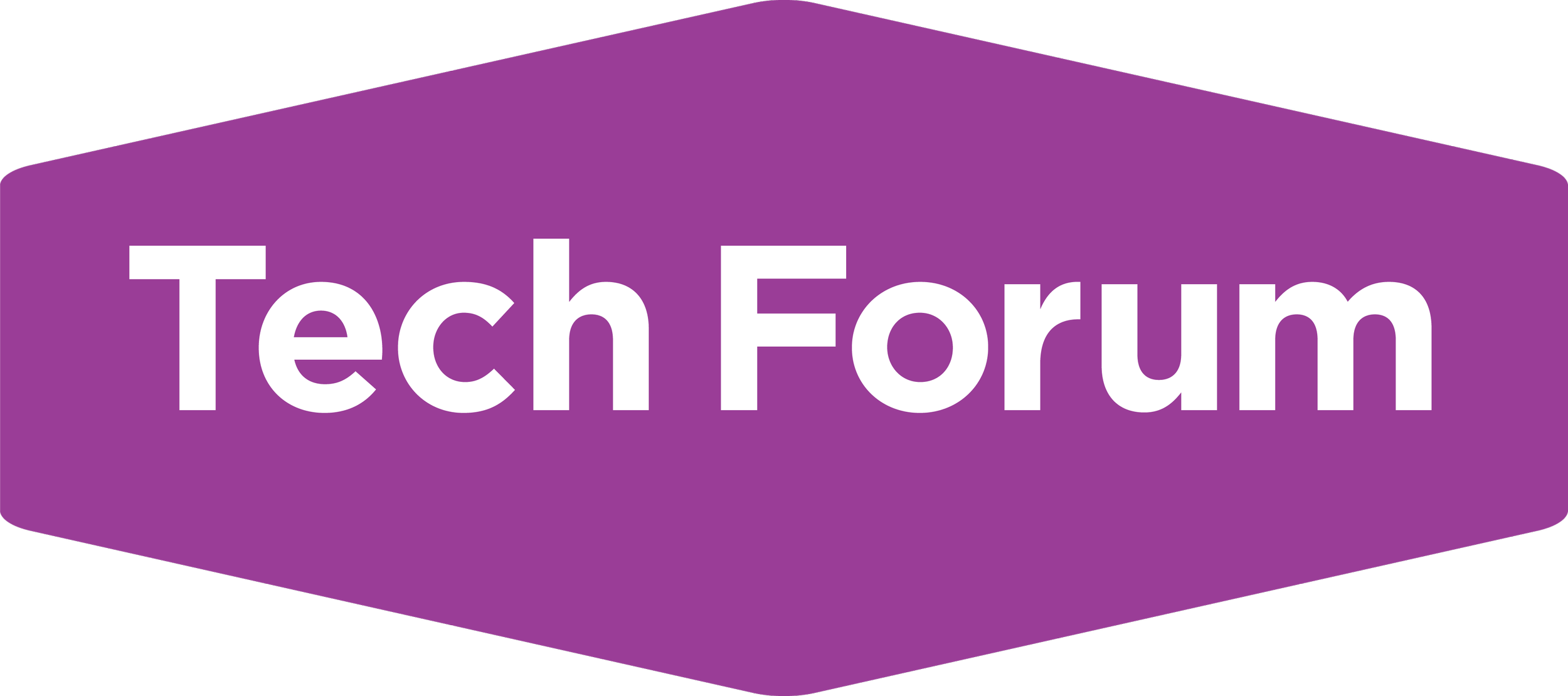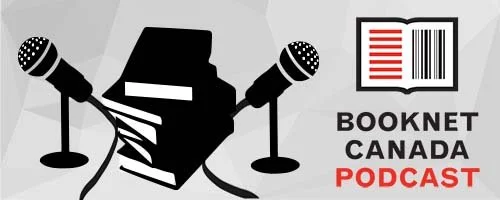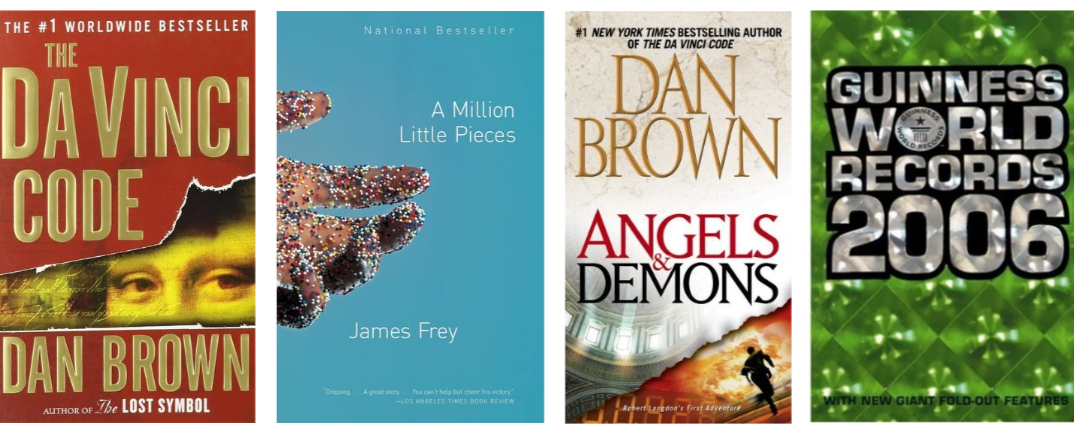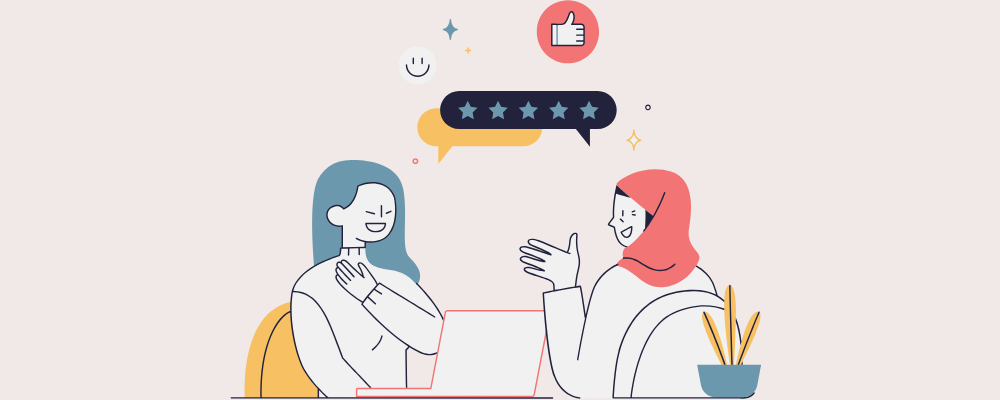In this month’s episode, we hear from Daniella Levy-Pinto, Manager at the National Network for Equitable Library Service, and Sarah Smith-Eivemark, Associate Director of Retail Marketing and Partnerships at Penguin Random House Canada about the latest collaboration project between their organizations and its impact on accessibility.
(Scroll down for the transcript.)
Want to make sure you never miss an episode of the podcast? You can subscribe for free on Spotify, iTunes, Pocket Casts, TuneIn, or SoundCloud.
Further Reading/Listening
Learn more about:
5 Ingredients Mediterranean by Jamie Oliver
Billy and the Giant Adventure by Jamie Oliver; illustrated by Mónica Armiño
Transcript
Nataly Alarcón: Welcome to a new episode of the BookNet Canada podcast. I am Nataly Alarcón, BookNet's marketing and events manager. In today's episode, we have a special interview with Daniella Levy-Pinto, manager at the National Network for Equitable Library Service, NNELS, and Sarah Smith-Eivemark, associate director of retail marketing and partnerships at Penguin Random House Canada.
If you haven't heard yet, these two organizations recently collaborated on a noteworthy project, representing a significant milestone for the publishing industry and accessibility. They will be sharing the details of this project with us in this interview.
Good morning, Daniella. Good morning, Sarah. Thank you both so much for accepting our invitation to participate in this podcast episode. I am very excited about having this conversation regarding the latest collaboration between NNELS and Penguin Random House Canada. Your presence here is highly appreciated.
Sarah Smith-Eivemark: Thank you so much for the invitation. It's truly a pleasure.
Daniella Levy-Pinto: Thank you so much. We're very excited to be here.
Nataly: Amazing. Let's get started. We had six questions that I want to go over. And the first one is, I'm wondering if you can tell us more about Jamie Oliver's latest books, 5 Ingredients Mediterranean and Billy and the Giant Adventure. And I want to know what makes them special in terms of accessibility.
Daniella: These two titles are especially exciting in terms of accessibility because they were simultaneously released in braille at the same time as the print version. For NNELS, it's the first time that we do a cookbook in braille as a simultaneous release. That's super exciting. And the other exciting aspect is that both titles have image descriptions included in the braille. So all the beautiful illustrations, readers who are accessing this content in braille will actually be able to enjoy.
Nataly: Anything you want to add, Sarah, from the publisher's point of view?
Sarah: Yes, please. Thank you, Nataly. So in addition to all of the wonderful things that Daniella just said, yes, all editions were released simultaneously on November 14. The cookbook, 5 Ingredients Mediterranean, it's a brand new "5 Ingredients" cookbook from Jamie Oliver, so it is 125 utterly delicious, easy-to-follow recipes where, as it says in the title, each recipe consists of five ingredients only. So that in and of itself for struggling cooks such as myself, that makes things easier right off the bat.
Billy and the Giant Adventure. This book is so close to Jamie's heart. It is his debut novel for children. It also features recipes and illustrations at the back, as Daniella says. And it is very special in that it is also typeset in a dyslexia-friendly font for kids who struggle with reading as Jamie did when he was a child. So this book is a passion project in so many ways, not just an exciting story, which, of course, it is, it's filled with adventure, a dash of friendship and a sprinkle of mystery. But we're just so thrilled that these books are now available in all formats for every kind of reader.
Nataly: I love that. That's very exciting. But all this has me wondering, how did the idea of releasing the standard print and digital editions simultaneously with the physical braille editions of the books come about?
Sarah: So it started when I met Daniella's lovely, lovely colleague, Riane, at, well, this year's February OLA conference. That's the Ontario Library Association Super Conference. And Riane very kindly and generously approached me, let me know about her work, and asked if Penguin Random House Canada would be interested in working with NNELS on this simultaneous publication project. My immediate answer was, "Yes, we're absolutely interested. I don't know how to do that. Let me figure it out."
And as we were having those conversations, our company announced internally that we were becoming Jamie Oliver's new publishing home in Canada, which was ... it's still so exciting. We're all such huge Jamie Oliver fans in-house. And so as that information was sort of floating in the air, I reached out to Riane and I asked her, she had mentioned funding was available for one book, and I asked her if funding could be made available for two books. And very happily, she said yes. And that is how it all got started.
Nataly: Awesome. Anything you want to add, Daniella?
Daniella: Absolutely. So thank you, Sarah, for all that. So just to take a tiny step back, Riane Lapaire is NNELS accessibility testing and braille production coordinator. So she is our expert in all things braille. When she told me about some of the connections she has made at OLA, we got excited. NNELS has been working with publishers on simultaneous releases in braille for a couple of years. We have usually worked, or mostly worked with independent Canadian publishers. So really, when we have the opportunity to work with a larger publisher, we know the impact will likely be much larger in terms of awareness, in terms of reach. So absolutely when the possibility of publishing two titles was floated and Riane asked me, I was like, "Yes, we need to make this work," and we are here.
Sarah: And I just want to jump in because I'm just simply excited. I remember the day so clearly when Riane and I figured out that it was possible and we could move forward. I think we both, in our respective offices, fist-pumped and ran around a little bit. That's the story we both shared with each other.
Nataly: I love that. But I think we should elaborate a little bit more on why this simultaneous release is so important for inclusivity and accessibility.
Daniella: Braille readers are used to waiting for titles in good quality braille to be produced, many times, months or years after the release dates. This is really an unusual event that, you know, two titles are released the same day in both braille and print. So essentially, this means inclusion that all readers have access at the same time. People in this case who are blind and rely on their fingers to read don't have to wait or maybe never have access to all the content with, you know, someone may read something to them or they may be able to access the content in another way. This is really a testament to the fact that working together, it is possible to do it to offer access, essentially the same opportunity for everyone to access the same content, regardless of their reading preferences or needs.
Nataly: Thank you. Thank you both for that. I am also very interested. I think I read in the press release and you mentioned that, Sarah, as well, that Jamie himself seemed to be very eager to have this happening. You know, the thing that you shared with us about the dyslexia-friendly book and how, you know, it was his own experience. So I'm also curious about how the partnership between the three protagonists of this story, I guess, Jamie, NNELS, and Penguin Random House came about, and why is it important to have maybe the author involved? I'm also, like, sort of wondering who pushed for that change, for that to happen, basically.
Sarah: That is a great question. If you'll allow me to start at the very beginning, I hope I can tell you a story that answers all of your questions. So once we were basically given the go-ahead, okay, we are going to create these braille books, I essentially had to figure out on my end how to get all of the required approvals across the two different Canadian publishing teams and, of course, from Jamie Oliver's team, Jamie Oliver himself.
So one of the discoveries for me throughout this process was learning that as it turned out, the permissions to produce a braille edition were actually baked into our original contracts with Jamie Oliver. And so there's a world in which we technically could have gone ahead and created the books without ever touching base with him, but we simply would never do that. Author care is our number one priority always. And of course, with Jamie Oliver, we wanna make sure that his books are being produced and shared in a way that he's aligned with.
And so once we had all of these different pieces in place, we were able to take the proposal to him and his team across the pond. And I consider it a career highlight to this day, just learning how supportive and enthusiastic he was about the project. In fact, the press release that you referred to, Nataly, Jamie specifically asked that it be shared with all of his international publishers in the hopes that, as we've just been discussing, it helps raise awareness and encourage publishers to keep doing the same. Did I actually answer your question there?
Nataly: Yes, absolutely. And I think that comment that you made at the end, it's basically the reason why we wanted to have this conversation.
Sarah: Well, if you'll indulge me once again, I'll also share. I really have to shout out everyone at NNELS. Daniella, your team is amazing. Riane was infinitely patient. There was a moment there where I wasn't sure we were going to hit our deadlines. And I think we did it by inches. The manuscripts were delivered, and then Riane and her team worked around the clock to transcribe everything.
And I've said this to her twice now, but I'm going to say it again. I hope I'm not embarrassing her. The image descriptions are beautiful. It is not easy to write in a way that is succinct, simple, and clear. And I was blown away by the quality of the image descriptions. And I seriously think she has it in her to be a poet, if she so wishes one day. And so it was truly a delight to work with such a collaborative team, also a patient team. There were bumps along the way, but also a massive amount of learning. So I hope that we will continue to work together and it'll just be easier moving forward.
Daniella: Thank you so much, Sarah. At NNELS, we are all passionate about ensuring that our work is as successful as possible. And we recognize that different people are at different places in their accessibility journey. So a big part of what we do is actually try to meet people wherever they are. And every step is a step towards the common goal of more accessibility.
The image descriptions for braille titles like these ones also have an additional challenge. Not only they are amazing and wonderfully described, and they're beautiful, as Sarah said, and absolute credit to Riane, who worked tirelessly to do them. But for braille titles, image descriptions also have to take into account how much space they will take in the book itself. I would like to emphasize the relevance of having the image descriptions.
Also, I did want to say, given the super tight deadlines, Riane and our team worked on the image descriptions, and we did outsource the translation, the transcription to certified braille transcribers. Point-by-Point is the organization we worked with, and they did an amazing job. So yes, there was a lot of coordination, a lot of coordination is needed. But as Sarah said, it's really learning about this and the next times will be simpler once the process is sort of figured out.
Nataly: I was wondering if you can share some insights about what goes into creating the braille editions for these books. Is there only a print braille version, or is it also a digital braille edition?
Daniella: So there's a digital braille edition complete with image descriptions. It's a standalone file. BRF file is the format, and it can be downloaded and read using refreshable braille displays that's available through the NNELS repository. There's a physical copy at Cochrane Public Library in Alberta and that can be interlibrary loaned for those who want a physical copy. The digital files can actually be used for embossing a personal copy for those who have the equipment. And I'll let Sarah speak about the other formats.
Sarah: Yeah, if I can jump in. So this was another learning for me throughout this process and it did cause a bit of a delay internally on our end simply because it was so new. So one of the amazing things about the digital braille edition is that, as Daniella says, it can be requested internationally by anyone. And so typically, with a book, especially a book by someone as renowned as Jamie Oliver, those rights are split off by country. So I like to joke that around a country's borders, an invisible wall usually goes up that blocks all of the content in.
And so learning that these very important sensitive files would be made available for request anywhere was just different. That is possible through, I am looking at my notes, a public-private partnership led by the World Intellectual Property Organization, which I just think is amazing. And the other note that I'll say about the braille editions, because I just truly cannot shout out this man enough, Jamie Oliver requested that his physical braille author copies be donated to the US Braille Institute. So US readers are also welcome to request the books from the Braille Institute.
Nataly: That's wonderful. And Daniella, this is also maybe a little bit more technical, but we are wondering, how does NNELS ensure that their braille versions are of high-quality reading experience for individuals?
Daniella: Absolutely. So first, the braille version is created from the publisher files, either the PDF or EPUB. And that is then worked on by a certified braille transcriber. This is particularly important for good-quality braille. Critically, in a recipe book, you want the measurements to be correct. So that process has to be done by a human-certified transcriber in braille. There are a lot of nuances in braille, or symbols, or special characters, or indicating format. And so this is why it is critical to have access to the publisher files. Usually, when we work in this kind of simultaneous release, [we] request them 10 weeks in advance to allow for all those checks and transcriptions and for the software. But there is, indeed, a human element to ensure that high-quality braille that readers deserve.
Nataly: That's very interesting, especially in a world where most people, I don't know, probably ... at least in my work, we talk about AI all the time. So it's interesting, you know, that definitely, especially for these type of processes to ensure that there is a high quality in the experience, there has to be a human involved. My next question, we talked about this a little bit, but I just want to make it a little bit more clear. How can readers access the digital braille editions of these books?
Daniella: Braille readers in Canada can access the digital version through the NNELS repository, nnels.ca. There's also the possibility for interlibrary loan request, and this is for the physical copy which is hosted by the Cochrane Public Library in Alberta. Internationally, the titles can be requested via the Accessible Books Consortium, which is an organization created by the World Intellectual Property Organization to help with implementation of the Marrakesh Treaty.
Sarah: I'll just jump in and add that the other amazing thing that I learned throughout this process was, in addition to being internationally available, it's actually more expensive to produce a digital braille edition than it is to produce a physical braille edition. And such logistics dictate how many braille books can be made. The comparison in price between creating a "regular" physical print book and a physical braille book, it's astronomical. And that is a huge stopping point, I believe, in the production of these books in the first place, that is when you break it down and isolate it, it's an infrastructure issue. And that is something that can be addressed. And I know it is difficult and there are others in the front lines doing all of this very, very important work.
I am personally so grateful to have been made aware of all of this. And now I am bringing it into my company as best as I can. And I am so happy that I work with such a supportive leadership team and everyone, every step of the way has said yes to this project. And I am hopeful and pretty confident and optimistic that that will remain the same. And I hope to keep working with NNELS in the future, especially because it's just so important. These books are for everyone. And if it's, again, simply an infrastructure issue in the way of making the books, then we can fix that.
Nataly: Absolutely, absolutely. Before we move forward, Daniella, do you mind explaining very briefly what is the treaty?
Daniella: So the Marrakesh Treaty is the framework that allows international exchanges of books that have been created in alternate formats, be it braille, audio, or other specialized formats, essentially to reduce duplication of efforts. If there is already an audible version of a very long title that was produced in one language in one country, there should be no need, especially because we know that the need for accessible content is so high.
In order to exchange titles in the context of the Marrakesh Treaty is done through the Accessible Books Consortium, which is the organization that hosts the catalogue and connects what is called authorized entities in the different countries. In Canada, for example, NNELS is one of the authorized entities. CELA, which is the other national library offering service for people with disabilities, is another authorized entity. BAnQ in Quebec is another authorized entity. So the different organizations that actually produce alternate formats are the ones who can request titles on behalf of the people they serve. The public cannot access them. So this ensures that the rights of the publishers are ... This provides a framework for sharing, respecting the rights of the publishers.
Nataly: Thank you. And I really like the idea that there's no duplication of efforts. As you were saying, it makes sense that this exists. I think we can just jump into our last question. What does this new accessibility and inclusivity achievement mean for future books published by Penguin Random House Canada?
Sarah: I hope it means that you'll see a lot more braille books from us in the future. Obviously, change doesn't happen overnight, but I am, again, grateful and glad to be in direct contact with Riane and Daniella and Leah at NNELS. And Riane and I have made plans to touch base again at this next upcoming OLA organization. And I hope by the time that I meet with her, I'm teasing a little bit here, but I'll have something that I'm working on to share. And I, again, have asked, I'm confident, so many dumb questions throughout all of this. And I imagine that some of my questions were probably quite frustrating because, again, I know that this is work that has been done for so long and there are so many people working so hard to make these books possible. And now I think what's different is that we have this new relationship and I'd like to make sure that it just grows and becomes stronger moving forward.
Nataly: I love that. Thank you. Daniella, is there anything you want to share before we wrap up?
Daniella: Sure. All of my colleagues at NNELS are very excited about the work, the collective work that we have done with Penguin Random House for these titles. We understand, again, awareness is the first step. And we are excited about what's to come. There is ongoing work for developing a new electronic braille standard, which will likely change and facilitate some of this work. There is a lot of things that we don't know, but technology is great to help us innovate, and accessibility is one step at a time. So it's all very exciting. Thank you, again, for the invitation and for the opportunity to talk about this.
Nataly: Thank you both. Yeah, we've reached the end of our interview, but I am so incredibly grateful for your time. Thanks, Sarah. Thank you, Daniella.
Sarah: Thank you so much for the invitation to join you both. It's truly a treat and a pleasure.
Nataly: Before I go, I’d like to take a moment to acknowledge that BookNet Canada’s operations are remote and our colleagues contribute their work from the traditional territories of the Mississaugas of the Credit, the Anishinaabe, the Haudenosaunee, the Wyandot, the Mi’kmaq, the Ojibwa of Fort William First Nation, the Three Fires Confederacy of First Nations (which includes the Ojibwa, the Odawa, and the Potawatomie, and the Métis, the original nations and peoples of the lands we now call Beeton, Brampton, Guelph, Halifax, Thunder Bay, Toronto, Vaughan, and Windsor. We encourage you to visit the native-land.ca website to learn more about the peoples whose land you are listening from today. Moreover, BookNet endorses the Calls to Action from the Truth and Reconciliation Commission of Canada and supports an ongoing shift from gatekeeping to spacemaking in the book industry.
The book industry has long been an industry of gatekeeping. Anyone who works at any stage of the book supply chain carries a responsibility to serve readers by publishing, promoting, and supplying works that represent the wide extent of human experiences and identities in all that complicated intersectionality. We, at BookNet, are committed to working with our partners in the industry as we move towards a framework that supports "spacemaking," which ensures that marginalized creators and professionals all have the opportunity to contribute, work, and lead. We'd also like to acknowledge the Government of Canada for their financial support through the Canada Book Fund. And of course, thanks to you for listening.














The bestselling books of 2025 in the Canadian market.